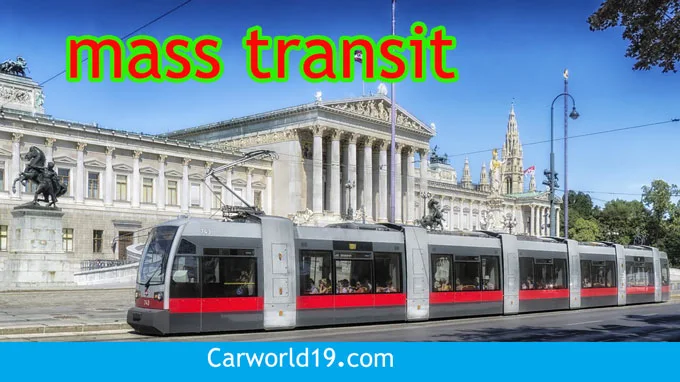By reducing single-car usage, robust mass transit helps cities cut hazardous pollutants and greenhouse gas emissions.
 |
| What effect has mass transit had on society? |
What effect has mass transit had on society?
By incorporating sustainable features into operations, limiting environmental harm, conserving energy, and lowering the use of fossil fuels, mass transit may become more sustainable.
Continuous Sustainability in Mass Transit
- Mass transportation is a city's greatest long-term solution for combating climate change and improving air quality.
- By reducing single-car usage, robust mass transportation helps cities cut hazardous pollutants and greenhouse gas emissions.
- By incorporating sustainable features into operations, limiting environmental harm, conserving energy, and lowering the use of fossil fuels, mass transit may become more sustainable.
- Since the turn of the century, public train and bus transportation in the United States has given an excellent example of how to include sustainability principles throughout a whole sector.
This is because the ability to become even more sustainable has been placed in the hands of those who can make a huge difference. Engineers, architects, planners, scientists, and a variety of other professions have been instrumental in bringing about significant changes by participating in historic mass transportation projects and setting a high standard for other companies and sectors to follow.
Future Challenges and Sustainability Opportunities
Mass transportation agencies have taken up the problem of reducing energy use to help prevent climate change, motivated by the consensus onerous climate forecast. Many projects and pilot programs have swiftly progressed from pilot to best practice by integrating various sustainable approaches.
To minimize greenhouse gas emissions, much energy savings are achievable, and future sustainability programs will almost certainly rely on enhancing battery storage. Using stored energy in conjunction with regenerative braking, solar energy generation, wind power, and a variety of other transportation infrastructure applications is a viable option.
The capacity, dependability, and affordability of a battery will very probably determine the possible expansion of an all-electric bus fleet. Numerous battery technologies are being developed, giving engineers greater options for testing new scientific innovations in new automobiles.
This will very probably result in the testing and evaluation of even more efficient energy storage technologies for use in mass transit, as well as government support for a speedy adoption. To support future mass transportation, such as a light rail system or bus rapid transit, renewable energy-generated electricity needs to be built.
There is an option to use subway underground water as a source of energy for heating and cooling. Groundwater that seeps into the subway tunnel's infrastructure is usually drained out and disposed of into a sewer.
Groundwater is generally a steady 55 °F at depths where a subway tube would be located, and water at that temperature can be utilized to assist cool electrical equipment. Geothermal is a sustainable energy source that has yet to reach its full energy potential and should be investigated more regularly for usage in mass transit.
- To the public's advantage, green infrastructure may be included in the mass transit environment.
- Green infrastructure aids in the management of stormwater and, as a result, saves energy.
- Green infrastructure absorbs rainwater, lowering stormwater runoff volumes.
 |
| What effect has mass transit had on society? |
The amount of water in the sewers is reduced, which reduces the amount of energy used at the wastewater treatment plant. Filtering pollutants, absorbing carbon dioxide, and reducing the heat island effect are all benefits of vegetation.
Climate adaption solutions must be considered in both new projects and infrastructure restoration. Recent catastrophic weather disasters have pushed authorities to create flood protection and prepare for extreme storms to limit the impact.
Future sustainability measures on mass transportation infrastructure, such as a green and white roof, natural lighting, natural ventilation, and unique architectural glass that lets in natural light, lower heat gain, and generate electricity, function well together.
New and inventive sophisticated technologies, such as energy-efficient inventions like sleep mode and variable power escalators, are always being considered. The vibrations caused as people walk over a subway station's floor are utilized to generate power with the unique material. Turnstiles that generate power are being investigated as a pilot project.
Engineering, transportation, and sustainability professionals confront a variety of difficulties and possibilities when it comes to conserving energy, preventing pollution, and reducing greenhouse gas emissions.
Every day, new and potentially important advanced technologies are proposed for inclusion in sustainable efforts and based on past success in mass transportation, including public rail and bus networks, it is expected that additional innovation and emission reduction will occur.
